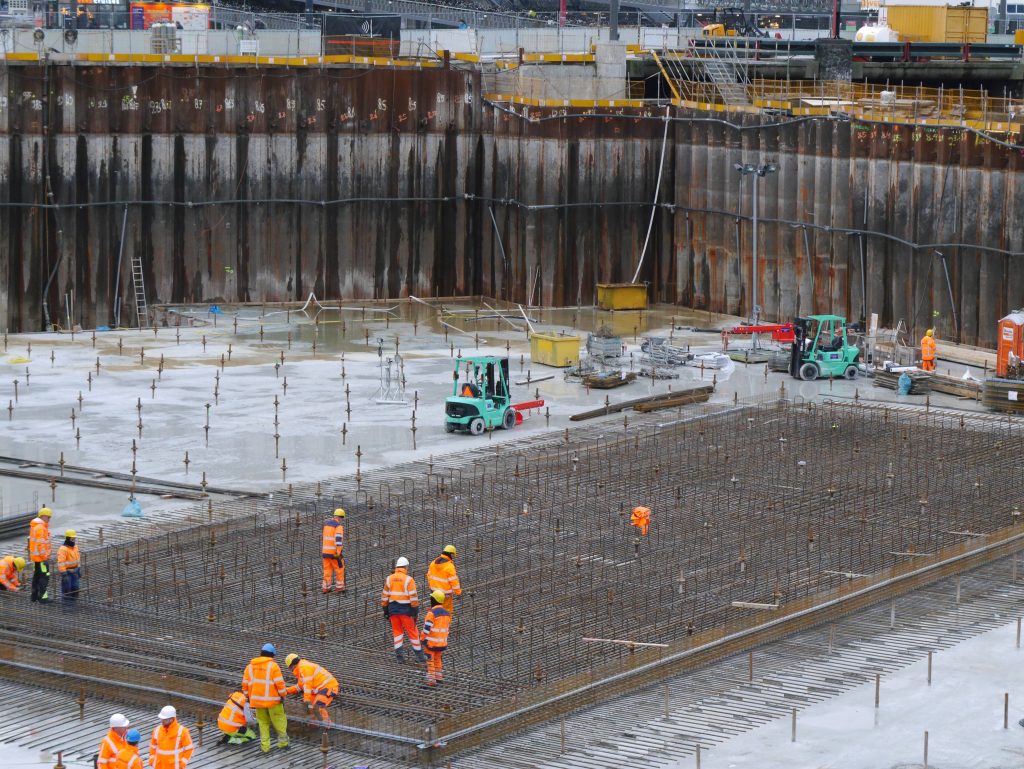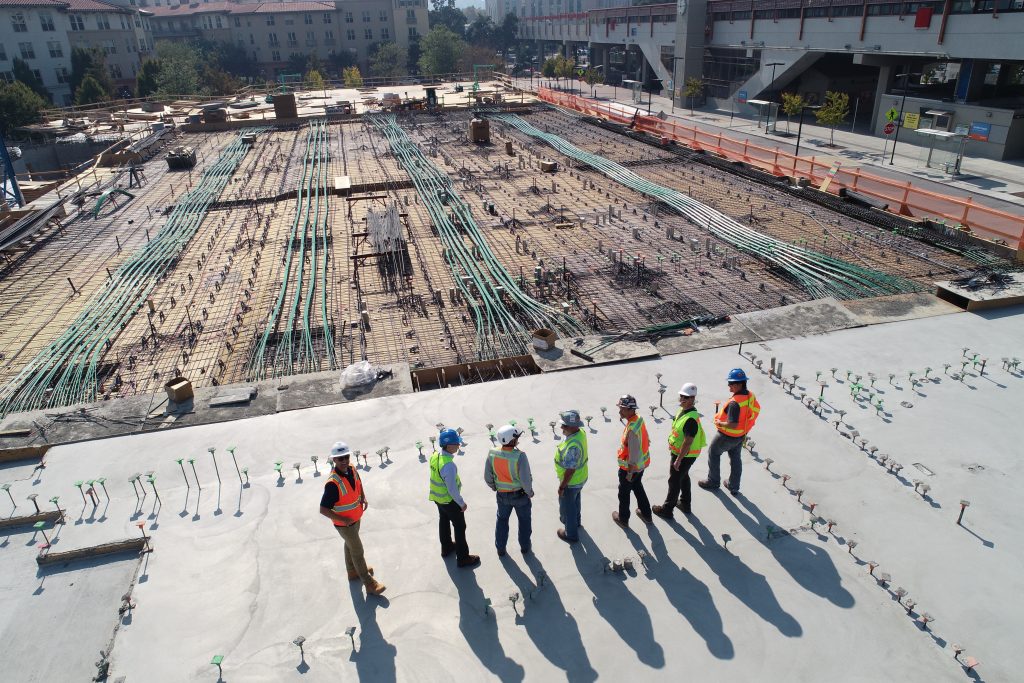Pouring concrete is a crucial process in various construction projects, as it forms the structural basis for foundations, walls, driveways, and other elements. One essential aspect of this process is the use of forms, which are temporary or permanent molds designed to hold the poured concrete in place while it sets and takes the desired shape. By utilizing forms, construction workers can ensure that the final structure is robust, stable, and efficient.
Concrete forms provide builders with precision and control over the shape and dimensions of the finished work. These molds allow for even distribution of concrete, reducing the likelihood of uneven surfaces or structural weaknesses that may negatively impact the project’s durability. Additionally, forms help maintain consistency and alignment, promoting a more aesthetically pleasing result.
With a variety of form materials available, including plywood boards and pre-manufactured forming systems, contractors can select the most appropriate formwork for their specific project needs. By understanding the importance of using forms when pouring concrete, professionals in the construction industry can enhance the structural integrity, safety, and visual appeal of their projects for years to come.
Understanding The Basics Of Concrete Forms
Concrete forms are essential components in the construction process, as they serve as temporary or permanent molds that hold poured concrete in the desired shape while it sets. These forms ensure the concrete structure’s stability and overall quality, making them a critical aspect of successful concrete projects.
There are different types of concrete forms to cater to various needs in construction projects. For instance, pre-manufactured forming systems are often used for walls, foundations, and larger structures. These systems consist of engineered wood with a metal frame or are entirely made of metal, allowing them to be easily attached and detached through a system of pins or latches.
Before pouring concrete, it is crucial to prepare the site effectively to avoid issues such as heaving from expansive soils and frost. This preparation step includes clearing the area of all grass, rocks, trees, shrubs, and any old concrete to expose the bare earth. Utilizing earth-moving equipment can expedite this process, particularly for larger pours.
During the pouring process, it is essential to evenly distribute and consolidate the concrete within the forms. This can be done by vibrating the forms, tapping the wood forms with a hammer, or using a palm sander, which helps bring the concrete paste to the surface to fill any gaps or holes.
Properly setting concrete forms contributes greatly to the durability and longevity of the built structures, making them an indispensable part of the construction process. With a clear understanding of the basics of concrete forms and their critical role, one can create well-formed and structurally sound concrete structures that stand the test of time.

Types Of Concrete Forms
Wooden Forms
Wooden forms are the most basic and conventional type of concrete form. They are primarily used for casting concrete that does not exceed 6 inches in height. Wooden forms consist of wooden boards that are either nailed or screwed together to achieve the desired mold or formwork shape. These forms are cost-effective and easy to work with, but they may not offer the same level of durability or reusability as other materials.
Metal Forms
Metal forms, typically made from steel or aluminum, offer enhanced strength and stability compared to wooden forms. They are most often used in larger construction projects such as piers or foundations, where pre-manufactured forming systems are employed. These wall systems are designed with a metal frame to attach to each other through a system of pins or latches, ensuring a secure and durable form for the concrete structure. Metal forms are more expensive than wooden forms, but their durability and ease of assembly make them a popular choice for many projects.
Plastic Forms
Plastic forms are an alternative to wooden or metal forms, offering the advantages of being lightweight, reusable, and resistant to warping or distortion. These qualities make plastic forms particularly suitable for complex or challenging concrete structures where versatility and adaptability are essential. Additionally, plastic forms do not absorb water or react with the concrete, ensuring a smooth and consistent finish without the risk of damage due to moisture or chemicals. However, plastic forms may be less suitable for very heavy or high-pressure concrete projects, as they may not possess the same level of rigidity and strength as metal forms.
The Role Of Concrete Forms In Structure Integrity
Concrete forms play a crucial role in maintaining the structural integrity of a building or construction project. Their primary purpose is to hold poured concrete in place while it sets and hardens, ensuring that the final product is strong and dependable. There are two key aspects of concrete forms that contribute to the structural integrity of a project: ensuring even pouring and shape maintenance.
Ensuring Even Pouring
One essential function of concrete forms is the facilitation of even pouring. When concrete is poured into a form, the walls and bottom of the form support the liquid material, creating a flat and level surface. As a result, the concrete settles uniformly without creating dips or weak spots. This even distribution of concrete helps to maintain the structural integrity of the final project, as the weight and forces are spread out evenly across the entire surface.
Shape Maintenance
Concrete forms also play a significant role in preserving the desired shape of a construction project. Once the concrete fills the form, it takes on the shape of the mold. As the concrete hardens, the form keeps it contained, ensuring that the shape remains consistent throughout the curing process. This precise shape maintenance is vital for the overall structural integrity of the project, as it ensures a consistent and predictable distribution of forces and loads throughout the completed structure.

Practical Aspects Of Using Concrete Forms
Concrete Curing
Using forms when pouring concrete is essential for achieving optimal results. Forms contribute to the curing process by holding the concrete in place as it hardens, enabling it to take shape. Concrete forms help ensure the concrete sets properly and maintains its durability for a longer period.
With proper Amico concrete forming, the concrete fills the void and assumes the desired shape, making it a versatile building material. These forms also help to create a consistent thickness of concrete, leading to an even curing process and preventing structural weaknesses.
Preventing Concrete Wastage
In addition to assisting in the curing process, concrete forms significantly reduce wastage during construction. When forms are set up correctly, the amount of concrete used is precise and tailored to the project, preventing overuse and unnecessary consumption of materials.
Additionally, by providing a well-defined border for the concrete, the forms prevent spillages and the need for clean-up work after the pour. This increases the efficiency of the construction process and helps ensure resources are utilized effectively.
In conclusion, using concrete forms is critical in the construction process for both practical and efficiency reasons. These forms ensure proper curing and prevent wastage, making them an indispensable part of any concrete project.
Conclusion
Using forms when pouring concrete is essential for a successful construction project. Forms provide stability, shape, and control for the concrete to set effectively. This results in a strong, durable, and visually appealing final product.
Properly installed concrete forms ensure that the finished product has clean edges and smooth surfaces. This not only increases the structural integrity of the finished project but also enhances its aesthetic value. Furthermore, using appropriate form materials and bracing techniques ensures that the forms can withstand the weight of the wet concrete during the pouring process.
Incorporating safe work practices and adhering to formwork and rebar design guidelines helps mitigate potential hazards on the jobsite. This, in turn, contributes to an overall efficient and safe construction process.






